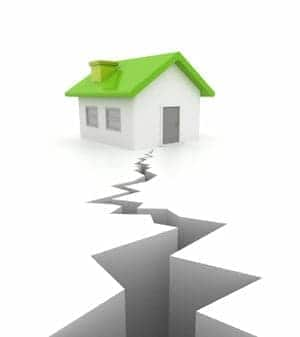When does homeowners insurance cover mold?
Home insurance companies may cover mold removal depending on your policy type and the specific kind of damage.
"Frequency of coverage is difficult to answer. Coverage will vary by carrier and individual policy. Most carriers that do offer mold coverage have limits that typically start around $2,500 to $5,000 and can go up from there; it depends on the individual policy and what the customer is willing to pay for from a premium standpoint," says David Ragsdale, a production manager at Servpro Industries, a cleaning and restoration company.
An insurance company will cover a claim when an ice dam causes damage because it will fall under the “covered peril and timing” part of the policy. It will also cover damage from sudden and accidental discharge of water, like a burst pipe, but not from a slow leak you were aware of but didn't fix.
"If a leak occurs but goes unattended for an extended period and mold begins to grow, it may not be covered. However, if an ice dam forms in the winter, water leaks into the attic for a short period of time and mold begins to form before the damage becomes apparent, then it may be covered. Mold coverage is strictly determined by the investigating adjuster," Ragsdale says.
Mold mitigation insurance coverage may be an option, but some causes of mold are not covered by home insurance. If the damage is from a flood, sewer backup, or water seeping from the ground, you’ll be paying out of pocket because those are not covered perils.
Learn more about other strange things your home insurance covers.
Additional coverage for mold damage
There are two options you can add to your homeowners insurance that could give you additional protection:
- Water backup coverage: This covers mold that forms due to failed sump pumps, backed up drains, or clogged sewer lines.
- Hidden water damage coverage: This covers mold caused by a leak you couldn’t see because, for instance, it was within the walls, floors or behind an appliance.
When does homeowners insurance exclude coverage for mold?
Mold exclusion in insurance policies is common. If you want all forms of mold damage covered, you’ll need to pay for additional riders on your policy. Homeowners insurance excludes coverage for mold if the damages are due to the following:
- Flooding. Home insurance doesn’t cover flood damage, including mold. A separate flood insurance policy will cover mold damage in most cases.
- Water backup. The resulting mold will not be covered if water backs up due to a broken pipe or a clogged sewer pump. You can add a water and sewage backup endorsement to your policy.
- Poor maintenance. Insurance won't cover the resulting mold if there are neglected leaks or broken seals around the sink and taps in the kitchen and washroom.
- Humidity. If the house is poorly ventilated, leading to high humidity, insurance won’t cover any mold that grows.
How to make a mold insurance claim
If you find mold, don’t touch it. Document it with photos and reach out to your homeowners insurance provider.
The next step would be to review your homeowners insurance policy to see if it covers mold damage. You can also contact your insurance company about the coverage.
If you file a home insurance claim for mold, your insurance agent or an adjuster will contact you and inspect the damage as part of the insurance claims process.
If your mold damage claim is covered, ensure only the applicable charges go toward the mold remediation limit. For example, if your laminate floor costs $2 per square foot to replace without mold and $2.50 per square foot to remove with mold, only $.50 per square foot should be charged to your mold limit. The rest falls under your dwelling coverage limit.
Don't be intimidated by the home insurance company, either. Most times, mold remediation companies have the expertise to assist in filing your claim, so bring one on board to help.
"If the mold damage is covered, [we] can handle all the aspects of the remediation and submit billing to the carrier on behalf of the policyholder,” Ragsdale says. “We can help a policyholder through the claims process but have no authority over what is covered or not."
Who pays for mold remediation?
If you are looking for an answer to the question, is mold remediation cost covered by insurance? It does, but not in full. The process of remediating mold from a property is time-consuming. It’s also expensive, with the average cost ranging from $15,000 to $30,000, according to ECI Insurance in Oklahoma. To mitigate these costs, insurers have sub-limits, which are limits on a particular type of coverage.
"Typically, insurance policies will state a maximum limit of between $1,000 and $10,000 for mold remediation. Depending on the company you're with, there may be an option to increase that coverage. However, if you live in a mold-prone state where there is a lot of rain, this coverage can be expensive or nearly impossible to obtain,” Ragsdale says.
And remember, there is no way to handle mold other than full remediation, so don't cut corners.
"There really is no shortcut to mold remediation. The source of the water/moisture must be corrected, non-salvageable materials will need to be removed, and the remaining affected surfaces will need to be cleaned,” Ragsdale says.
How to find hidden mold in your house
Mold is a type of fungal growth that spreads primarily on damp and decaying organic matter, according to the Centers for Disease Control and Prevention (CDC). There are different species of molds, which come in various colors. There are different ways to know whether there is mold in your home.
A few things to look out for are:
- A rotten smell: this is a smell caused by the presence of mold volatile organic compounds (MVOCs) and confirms the presence of molds in your home.
- Fluffy and slimy-touching substances on the fibers of your clothes are another indication of a mold problem in your home.
- Dirty carpets or rugs with stains can become a breeding ground for mold.
- Areas in your home that are prone to moisture are breeding grounds for mold. A few such areas are the water heater closet, the kitchen sink, and around the shower or bathtub.
- Discolored spots or spores are a sign of fungus developing in your furniture and become a breeding ground for mold, especially on furniture made of leather or foam.
Follow these do’s and don’ts once you spot a mold problem.
| Do’s | Don’t’s |
|---|---|
| Stay out of affected areas; | Touch or disturb the mold |
| Turn off the HVAC systems and fans | Blow air across any surface with visible or suspected mold |
| Restrict access to the area with mold | Attempt to dry the area by yourself |
| Contact your home insurer and/or a mold remediation expert | Spray bleach or a disinfectant on the mold |
| Paint over it |
How to prevent mold growth
You can take steps to prevent mold growth before it becomes a bigger problem. A few of these steps include:
- Keep the sink areas dry by wiping away any excess water.
- If you are building a new home or remodeling an existing one, use mold-resistant materials.
- Get a dehumidifier to keep your home free of excess humidity.
- Lastly, you can go to a mold specialist to assess your home for mold issues. They can make recommendations to stop a problem before it worsens.
Sources
- CDC. “What is mold?” Accessed August 2022.
- Top ten reviews. “Signs your house has mold.” Accessed August 2022.
- FEMA. “How fast can mold grow.” Accessed August 2022
- EPA. “Can you clean mold damage yourself.” Accessed August 2022
- EPA “A Brief Guide to Mold, Moisture and Your Home.” Access December 2022
Frequently Asked Questions
What insurance companies cover mold damage?
Most insurance companies cover mold damage, as long as a covered peril causes it. You will need to contact your insurance provider to see if they offer any additional endorsements for mold protection to cover uncovered perils.
Does homeowners insurance cover black mold?
If a covered peril caused the black mold, homeowners insurance will cover it. The type of mold doesn’t play a role in whether insurance will or will not cover the damage.
Does home insurance cover mold from water damage?
Home insurance will cover mold from water damage in certain situations. If the damage was caused by a faulty water heater leaking or an ice dam causing mold to grow inside the house, home insurance will cover it because those are covered perils. However, if you have a leaky pipe that you know about and don't repair, insurance will not cover the water damage or resulting mold, as it's not a sudden and accidental discharge of water.







